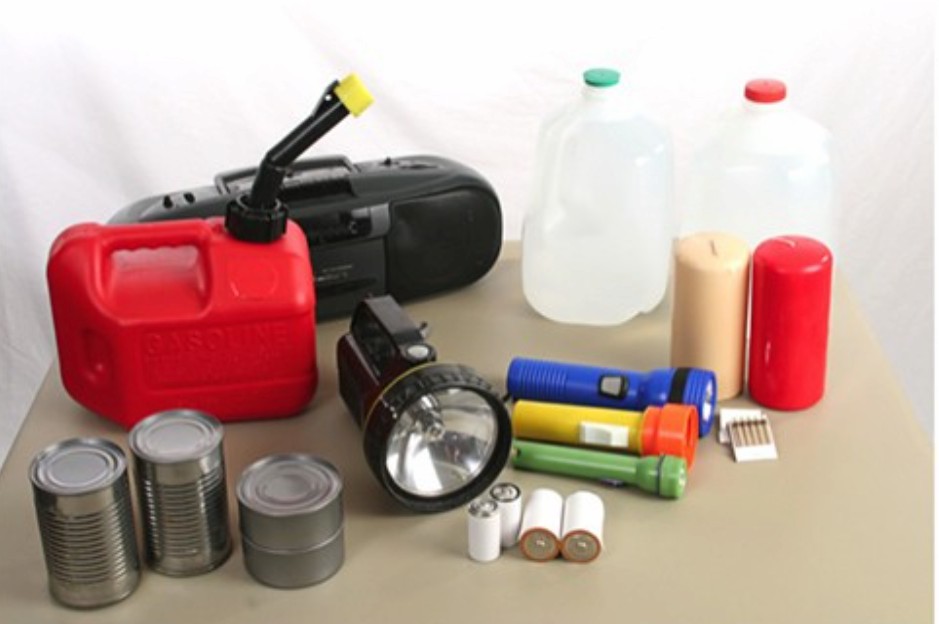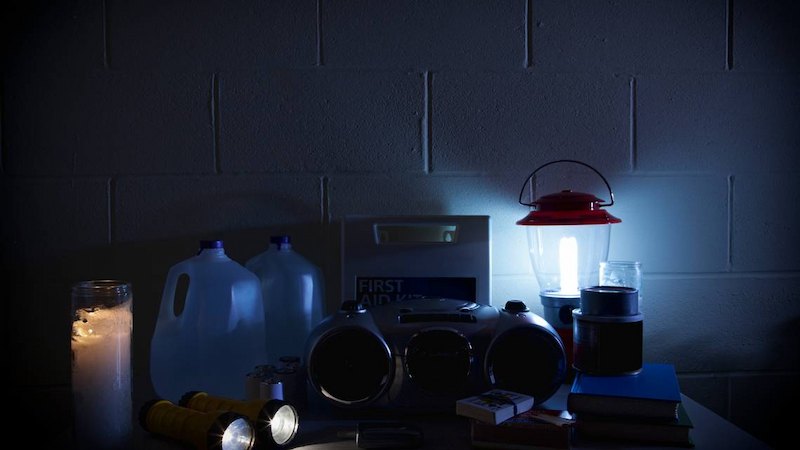Power outages can occur unexpectedly and disrupt our daily lives. Being prepared can make a significant difference in how you handle such situations. This guide will provide you with essential steps to prepare for power outages, ensuring you and your family stay safe and comfortable.

What to Do Before the Outage
Preparation is key to managing a power outage effectively. By taking the right steps before, during, and after the outage, you can minimize its impact on your life. Before a power outage happens, it’s essential to have a plan in place and ensure you have all necessary supplies.
Stock Up on Essential Supplies
Preparing for a power outage starts with gathering essential supplies. Ensure you have flashlights and batteries to last several days, a three-day supply of non-perishable food and water for each family member, and a well-stocked first aid kit.
A manual can opener is essential for accessing canned food. Stay informed with a battery-powered or hand-crank radio for updates on the outage and weather. Additionally, portable chargers are crucial to keep phones and other devices powered, ensuring you remain connected and informed.
Prepare Your Home
To prepare your home for a power outage, install surge protectors to protect electronics from power surges. Consider a backup power source, like a generator, for prolonged outages. Ensure your home is well-insulated by sealing windows and doors properly to retain heat.
These steps will help maintain comfort and safety in your home during an outage, minimizing disruptions and potential damage.
Create a Communication Plan
Creating a communication plan is crucial during a power outage. Compile a list of emergency contacts, including family, friends, and local emergency services. Ensure everyone in your household knows how to reach these contacts and where to meet if separated.
Having a clear communication plan will help maintain safety and coordination during an outage, ensuring that everyone knows what to do and where to go.
What to Do During a Power Outage

When the power goes out, safety and conservation of resources are paramount.
Stay Informed and Safe
During a power outage, it is crucial to stay informed and safe. Listen to a battery-powered or hand-crank radio to keep updated on the situation and instructions from authorities. Avoid using candles to prevent fire hazards and rely on flashlights instead.
It’s also important to stay indoors unless absolutely necessary to go outside, as this will help you avoid potential dangers such as downed power lines or severe weather conditions.
Conserve Resources
Conserving resources during a power outage helps extend your supplies. Limit opening your refrigerator and freezer to keep food cold longer, ensuring perishable items remain safe to eat. Use non-perishable foods first to preserve your refrigerated and frozen goods as long as possible.
In cold weather, bundle up by wearing layers of clothing to stay warm, reducing the need for additional heating sources and conserving energy.
Use Appliances Wisely
Using appliances wisely during a power outage can prevent damage and ensure safety. Turn off and unplug electronics and appliances to prevent damage from power surges when the electricity is restored.
If you use a generator, operate it outside to avoid carbon monoxide poisoning, ensuring it’s placed in a well-ventilated area away from windows and doors. Following these precautions will help protect your appliances and ensure the safety of everyone in your home.
What to Check After the Outage
Once power is restored, it’s crucial to ensure everything is functioning correctly and safely.
Inspect Your Home
After the power is restored, inspect your home to ensure everything is functioning properly. Check all appliances and electronics to confirm they are working correctly and weren’t damaged during the outage. Discard any spoiled food, as items in the refrigerator and freezer may have become unsafe to consume if the power was out for an extended period.
Additionally, reset clocks and timers on your appliances and systems, as these may need resetting after the power disruption to resume normal operation.
Replenish Supplies
Once the immediate inspection is done, focus on replenishing your supplies. Restock your emergency kit by replacing any items that were used during the outage, ensuring you are prepared for future emergencies.
Review and update your emergency preparedness plan, evaluating what worked well and what didn’t. This assessment will help you improve your plan and be better prepared for the next outage, ensuring a quicker recovery and enhanced readiness.
Conclusion
Preparing for a power outage involves thorough planning ahead, taking the right steps during the outage, and conducting a detailed inspection afterward. By following this comprehensive guide, you can ensure that you and your family remain safe, comfortable, and well-prepared during unexpected power outages. This proactive approach helps minimize disruption and enhances your resilience in the face of emergencies. Remember to stay informed, conserve resources, and review your preparedness plan regularly. Stay prepared and stay safe.
FAQ
What should I stockpile for a power outage?
Stockpile essentials such as flashlights and batteries, non-perishable food, water, a first aid kit, a manual can opener, and a battery-powered or hand-crank radio. These items ensure you can manage without power for an extended period.
What is the first thing you do when the power goes out?
The first thing to do is to check whether the outage is isolated to your home or affects a wider area. Turn off and unplug sensitive electronics to protect them from potential power surges when the electricity is restored.
How long will food keep in the refrigerator without power?
Food in a refrigerator will generally stay safe for about 4 hours if the door remains closed. A full freezer can keep its temperature for about 48 hours (24 hours if half full) if the door remains closed.
